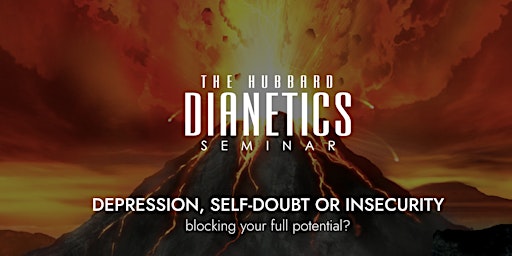Some Ideas on Dianetics You Should Know
Wiki Article
The Greatest Guide To Dianetics
Table of ContentsMore About DianeticsThe Facts About Dianetics UncoveredThe Single Strategy To Use For DianeticsThe Only Guide for Dianetics
As a kid, according to his aunties, Ron Hubbard was currently possessed of a fecund creative imagination, composing video games and tales for the entertainment of the inevitably conscientious grownups in his world. From the get go, he had a capability for fantasy which he was to lug with him throughout his life.Although he developed the large and intricate globe of Scientology, in which his fans could lose themselves for several years, he did not wish to be determined with his marks. By the early thirties, Hubbard got a partner and two toddlers (Dianetics). To the scary of his conservative parents, he failed out of college and had no appropriate skills with which to support his young family members

The Basic Principles Of Dianetics
He was a phenomenally rapid writer, and would work all evening to create tale after story, retiring at dawn to rest till early afternoon. No matter how prolific his outcome, he might never appear to make sufficient cash to sustain his profligate spending habits. By the mid-forties, his literary outcome was starting to decline.Yet he quickly understood the limits of his job, that he was not mosting likely to achieve power and cash by creating penny-a-word pulp adventures. The means to generate income, he began to mention to his pals, is to start a faith. He once addressed a group of sci-fi authors in New Jacket with words, "Writing for a cent a word is ridiculous.
Reports said he was working with something brand-new, a publication on psychology. In January of 1950, a mystical ad appeared in Astounding Sci-fi, a pulp magazine edited by his good friend, John Campbell, appealing: ... a post on the science of the mind, of human thought. It is a completely new scientific research, called Dianetics, and it does specifically what a scientific research of idea must do.

The Greatest Guide To Dianetics
It is an expedition into terra incognito, the human mind, that large and hitherto unidentified realm half an inch rear of our temples. You are beginning a journey. Treat it as an experience. And might you never coincide again. ( 3 ) Early in the publication, Hubbard introduced what he called the "clear." Dianetically, the optimum person is called the "clear." One will certainly listen to a lot of that word, both as a noun and a verb, in this volume, so it is well to hang around here at the beginning setting forth specifically what can be called a clear, the goal of Dianetic treatment.These tests validate the clear to be completely without such sickness or aberrations. ( 4 ) The state of Clear, Hubbard promised, was a frame of mind never in the past accomplished by male. In truth, upon achieving Clear, a person would proceed from the state of Homo Sapiens to the new and innovative state of "Homo Novis." Dianetic therapy, called "auditing" (to pay attention), transformed out to be an amalgam of Freudian analysis, in which a reclining client is motivated to remember previous distressing experiences; abreactive treatment, in which past occasions are reexperienced by the person with their going along with feeling; General Semiotics of Korzybski, in which a person discovers to set apart in between subconscious experiences; and the psychoanalytic theory of Nandor Fodor, in which the influence of prenatal experiences is checked out.
According to Hubbard, all the occasions of our lives are stored why not check here psychological as "psychological image photos," or memories. They are kept, or "filed," in "chains" by similar material. So a person may have a "headache chain," or a "pain in the appropriate ankle joint chain," go to my site and so on. By guiding the client, called the "preclear" in Dianetics (one who is not yet "Clear"), to recall and reexperience the traumatic memories on each chain, the potential of the "somatic" of that chain to "key-in" or become restimulated in the present can be erased.
The complete file of all the memories of a specific returning in time is called the "time track (Dianetics)." Hubbard asserted that when an individual was investigated to the point that all his subconscious, "reactive" memories were refiled in the "analytical" memory banks, after that he would certainly attain the state of Clear and would never ever once again experience the effects of his reactive mind
What Does Dianetics Do?

By the end of the year, over 150,000 copies of the Dianetics book had been marketed. In a glowing article in the New York Times, a reviewer mentioned dramatically that "history has actually come to be a race between Dianetics and disaster," ( 5 ) echoing an idea typically mentioned by Hubbard. By August, there were more than 100 students registered for the one month Dianetic auditing course taught at the Foundation by Hubbard.
Report this wiki page